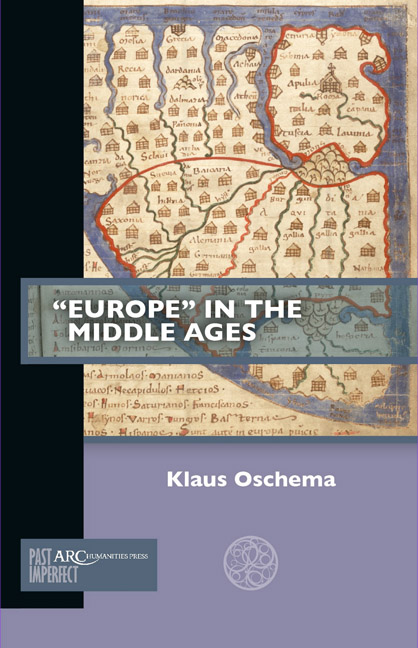Book contents
- Frontmatter
- Contents
- List of Illustrations
- Preface and Acknowledgements
- Chapter 1 Why Europe? A Concept Crossing History and Politics
- Chapter 2 Foundations in Antiquity
- Chapter 3 Moments of Transformation— Europe in the Early Middle Ages
- Chapter 4 Europe, Christianity, or Something Completely Different? Impressions from the Central Middle Ages
- Chapter 5 Our Last Hope? Entangling Europe and Christianity in the Late Middle Ages
- Chapter 6 Perspectives from Outside? Byzantium and the Arabic World
- Conclusion No Roadmap for Europe— History, Politics, and the Way to Global History
- Further Reading
Chapter 5 - Our Last Hope? Entangling Europe and Christianity in the Late Middle Ages
Published online by Cambridge University Press: 13 February 2024
- Frontmatter
- Contents
- List of Illustrations
- Preface and Acknowledgements
- Chapter 1 Why Europe? A Concept Crossing History and Politics
- Chapter 2 Foundations in Antiquity
- Chapter 3 Moments of Transformation— Europe in the Early Middle Ages
- Chapter 4 Europe, Christianity, or Something Completely Different? Impressions from the Central Middle Ages
- Chapter 5 Our Last Hope? Entangling Europe and Christianity in the Late Middle Ages
- Chapter 6 Perspectives from Outside? Byzantium and the Arabic World
- Conclusion No Roadmap for Europe— History, Politics, and the Way to Global History
- Further Reading
Summary
The preceding overview on the situation by the twelfth century focused on the development of older traditions, but afterwards authors in the later Middle Ages did more than just transmit and elaborate on inherited knowledge: they also learned to integrate the continent into contexts and discourses where its use was far from obvious (especially concerning religious questions). In addition, the sheer number of texts that referred to Europe, even when they did so only briefly, demonstrates that Europe had become a relatively prominent element in the authors’ worldview. While some ancient debates had been laid to rest (e.g., on the number of the continents or on the borders that separated them), new practices developed. The papacy (or its chancery) experimented with the notion in the years around 1100, and Europe appeared in numerous texts as a “space of resonance” or comparison for diverse phenomena. Most importantly, many authors explicitly identified the borders and the surrounding regions, especially between Europe and Asia, as a relevant and significant entity, and crossing those borders became a noteworthy act that was repeatedly mentioned in our sources. This chapter builds on these observations and inverts the perspective. Taking the eleventh and twelfth centuries as its starting point, it identifies central developments that characterized the uses of the notion of Europe towards the later Middle Ages.
Under Threat: Discovering Europe in Struggles against Saracens, Mongols, and Turks
Medievalists have often observed that, even in the absence of a concrete idea of Europe, specific contexts nevertheless triggered use of the notion. Indeed, having the word to hand, central and late medieval authors were quite capable and willing to employ it whenever it strengthened their argument. Accordingly, Bernd Schneidmüller has dubbed the notion of Europe as an “on-call term” (Abrufbegriff) that could be used at will, even though it played no essential role in the everyday workings of society and politics. Examples of this phenomenon can be found in contexts where authors described or commented upon a—perceived or real—menace from “outside.”
Constellations of this kind might appear to be relatively improbable at first glance: as we have seen, the Christianization of the European peoples, who thus accepted a religion of Asian origin, was largely accomplished (at least superficially) by the end of the first millennium—and a considerable number of texts emphasized this very fact when they described the works of the apostles.
- Type
- Chapter
- Information
- 'Europe' in the Middle Ages , pp. 69 - 112Publisher: Amsterdam University PressPrint publication year: 2023

